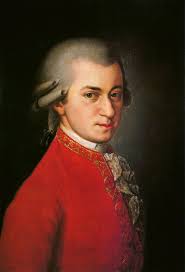Wolfgang Amadeus Mozart’s Requiem in D minor, K. 626 is one of the most celebrated choral works in classical music history. However, its creation is surrounded by mystery, tragedy, and speculation. Composed during the final months of Mozart’s life in 1791, the Requiem remains one of his most profound and emotionally powerful compositions, despite being left unfinished at the time of his death.
The Mysterious Commission
In mid-1791, Mozart received an anonymous commission to compose a requiem mass. The request came from Count Franz von Walsegg, an aristocrat who frequently commissioned works and passed them off as his own in memory of his deceased wife. The count’s emissary insisted on secrecy, which fueled later myths that the commission was a harbinger of Mozart’s own demise.
Mozart’s Failing Health and Final Days
As Mozart worked on the Requiem, he became increasingly ill. Reports suggest he believed he was writing the mass for his own funeral, contributing to the piece’s dark and introspective quality. Despite his deteriorating condition, Mozart worked feverishly on the composition, dictating portions to his student Franz Xaver Süssmayr. On December 5, 1791, Mozart passed away, leaving the Requiem incomplete.
Completion by Süssmayr
Following Mozart’s death, his widow, Constanze, sought to have the work completed to fulfill the commission and secure the remaining payment. Several composers, including Joseph Eybler, attempted to complete the piece, but the task ultimately fell to Süssmayr. Using Mozart’s sketches and instructions, he finished the work, adding the Sanctus, Benedictus, and Agnus Dei and completing unfinished sections of the Lacrimosa.
Debates and Controversies
Scholars have long debated the authenticity of Süssmayr’s contributions. Some argue that his completion lacks Mozart’s brilliance, while others contend that he remained faithful to the composer’s vision. Over the centuries, various attempts have been made to reconstruct the Requiem using Mozart’s original fragments, but Süssmayr’s version remains the most widely performed.
Musical and Emotional Power
The Requiem is revered for its dramatic intensity, complex choral writing, and profound emotional depth. Highlights include the haunting Introitus, the fiery Dies Irae, and the tender yet sorrowful Lacrimosa. Its blend of grandeur and intimacy makes it one of the most moving compositions in sacred music.
Legacy and Cultural Impact
Mozart’s Requiem has left an enduring mark on the world of music. It has been performed at numerous state funerals, memorial services, and cultural events. The myths surrounding its creation have inspired films, books, and artistic interpretations, further solidifying its place in classical music lore.
Despite its incomplete origins, Mozart’s Requiem remains a masterpiece—a poignant reflection of life, death, and the enduring power of music.


Comments are closed